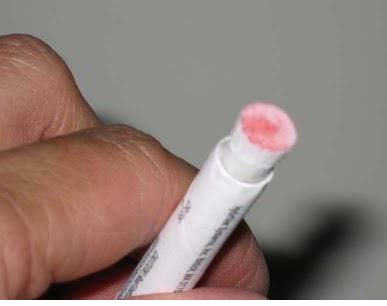 Many EPA Certified Renovators (CR) are surprised to hear that they are required to lead test each and every single component or integrated whole (component system). This surprise, is due to the instructor only spending a few minutes on “what to test” when teaching the 8 hour course.
Many EPA Certified Renovators (CR) are surprised to hear that they are required to lead test each and every single component or integrated whole (component system). This surprise, is due to the instructor only spending a few minutes on “what to test” when teaching the 8 hour course.
From the actual rule …
745.82(2) Renovations in target housing or child-occupied facilities in which a certified renovator, using an EPA recognized test kit as defined in §745.83 and following the kit manufacturer’s instructions, has tested each component affected by the renovation and determined that the components are free of paint or other surface coatings that contain lead equal to or in excess of 1.0 mg/cm2 or 0.5% by weight. If the components make up an integrated whole, such as the individual stair treads and risers of a single staircase, the renovator is required to test only one of the individual components, unless the individual components appear to have been repainted or refinished separately.
The FAQ on the EPA site gives even more clarification
Question – When testing a property for the presence of lead prior to beginning a renovation using an EPA-recognized test kit, must I test every component affected by the renovation?
Answer – Yes. Because certified renovator training does not cover sampling protocols, certified renovators using EPA-recognized test kits to determine the applicability of the RRP Rule must test each and every component that will be affected in order to determine that the RRP Rule does not apply to a particular renovation.
Question – When a certified renovator uses an EPA-recognized test kit to determine the presence of lead, can the results be grouped? For instance, may the certified renovator test just one window sill in a room if all will be affected?
Answer – No. The certified renovator must test each component affected by the renovation. If the components make up an integrated whole, such as the individual stair treads and risers of a single staircase, the renovator is required to test only one of the individual components, unless the individual components appear to have been repainted or refinished separately. Multiple window sills are not integrated parts of a whole. They are separate components and must be tested separately.
Question – Is a lead-based paint inspection, performed by a certified inspector or risk assessor, that includes a written determination that various building components are free of paint or other surface coatings containing lead equal to or in excess of 1.0 milligrams per square centimeter (mg/cm2) or 0.5% by weight sufficient to determine compliance with requirements of the RRP rule?
Answer – The RRP Rule does not apply to target housing where a certified inspector or risk assessor has determined that the components affected by the renovation are free of regulated lead-based paint or that a property is free of lead-based paint for the purposes of the Lead Disclosure Rule. The RRP Rule does not require certified inspectors or certified risk assessors to test each and every component that will be affected by a renovation. Certified inspectors or risk assessors are free to conduct representative sampling, so long as the components to be tested are chosen in accordance with documented methodologies, such as the HUD Guidelines. However, because certified renovator training does not cover sampling protocols, certified renovators using EPA-recognized test kits to determine the applicability of the RRP Rule must test each and every component that will be affected in order to determine that the RRP Rule does not apply to a particular renovation.
From these references, it becomes easy to see that each and every single component needs to be checked. However, it is not as clear what an “integrated whole” is. An integrated whole are similar components that are connected together. Examples would be …
- All the baseboards that are connected together in one room.
- All the crown molding that are connected together in one room.
- The top, left and right jambs of a door or window.
- All the risers and treads of a staircase.
- All the newel post of a staircase.
- All the balusters of a staircase.
- And more
In the above examples, only one component, that represents the other components needs to be tested in an integrated whole.
In reviewing the above, we can begin seeing that to pressure wash a home, a Certified Renovator would need to test upwards to 100 different components and/or integrated wholes.
Hopefully, this gives you a better idea of what to test.
Editors Note: Since the time of this article, things have changed, please see Dean’s update on what to test here.


Thanks Dean, those are some great points, and something that is not covered well in the RRP class. Thanks for all you are doing to keep our readers up to date on the RRP Rule!
EPA is aware that when utilized by a certified renovator, the LeadCheck® lead test kit can dependably identify that specific lead-based paint isn’t existing on wood or ferrous metal.
I don’t agree with this article. You are going WAY beyond what is expected. Let’s say I am going to repaint an exterior of a home. If the home appears to have been last painted all at one time I will check: One window to classify the windows. One area on the siding to classify all of the siding. One door to classify the doors. Possible the foundation if it is being painted. The only reason I will test anything outside of these parameters is if it appears a section of the house has been repainted separately from the rest of the house. This will keep my check points to about five. Obviously, if there is another group that I am painting (Fence, Stairs, Porch ceilings, etc) at that home I will check that area too. It is insane to expect any RRP contractor to check over 100 spots.
Let’s compare this to asbestos testing inside a home:
If all of the drywall in a home is to be demo’d for a renovation, the tester is only responsible for testing the different types of texture and drywall in that home. If it has flat ceilings, and knockdown texture on the walls, he will test the flat ceilings once and the knockdown texture once. If there are two rooms with the same orange peel, he/she will only test one of them. The tester will NOT test every ceiling and every wall of every room. This is not what is required by law. The same concept will apply to painters using RRP. If you have ten windows in one room all painted the same, you only need to test one window. If it appears one window is a different color, or obviously different in some other manner compared to the rest in that room, you should also test that second window. Let’s not go overboard here and drive ourselves out of business. Be safe, but be SMART.
Nick, Thank you for your comment. This can be confirmed by going to the EPA Frequently Asked Questions at http://toxics.supportportal.com/ics/support/default.asp?deptID=23019. In this EPA FAQ, they mention several times that EACH AND EVERY component needs to be checked. In the actual law, it gives a definition of what a component is. Pretty simple to read and understand, so I’m not sure where your opinion is coming from.
In your example, you would need to test all 10 windows in the room. Plus, you would need to test multiple spots on each of those windows. In the EPA FAQ, it specifically gives an example where a question was asked if only one window sill need to be tested. The answer was all window sills need to be tested. Once again, pretty simple to read and understand.
With your scenario, you are actually checking less (a lot less) than a certified lead inspector who has been trained and is allowed to do sampling. Certified renovators are not allowed to sample.
As a lead inspector, I’ve found 3 walls in a room with no lead based paint, while the 4th had it. I’ve found where the outside window sash has lead, but the jambs don’t. I’ve found popcorn ceiling be free of lead, while the room next to it had lead based paint in the popcorn.
If you would like to discuss more, I’m more than willing.